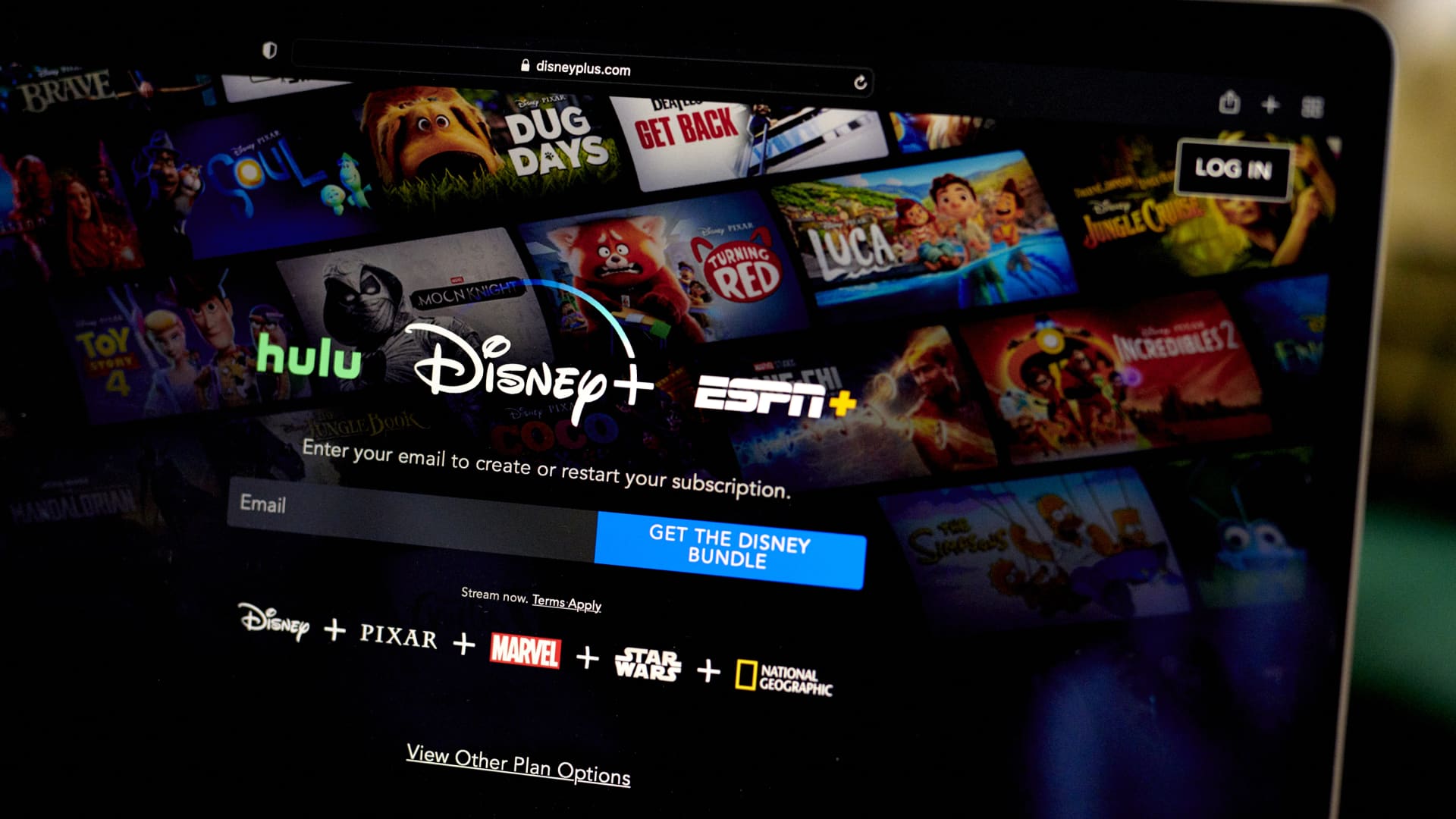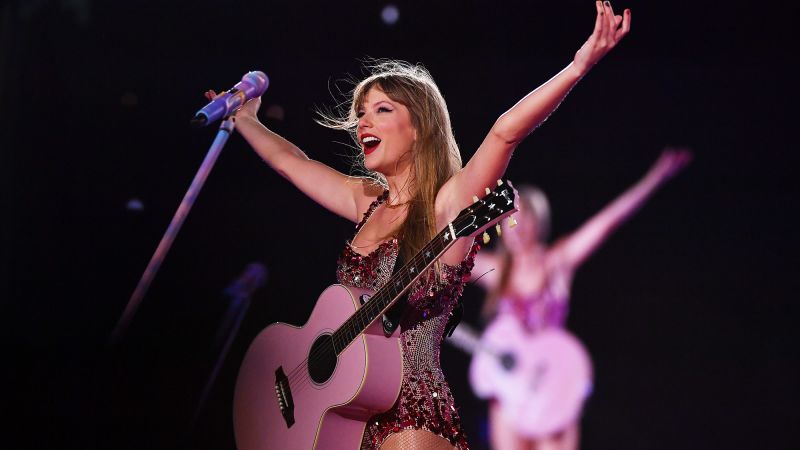Disney reported stronger-than-expected fiscal 2024 first-quarter earnings after the closing bell Wednesday as cost reductions across its many businesses boosted margins despite flat revenue. A strong profit forecast for the rest of fiscal 2024 and an upsized capital return program helped send shares up more than 6% higher in after-hours trading. Revenue was about flat year over year $23.55 billion, missing expectations of $23.64 billion, according to the consensus estimate compiled by LSEG. Adjusted earnings-per-share (EPS) increased 23% to $1.22, beating the LSEG consensus forecast of 99 cents. DIS YTD mountain Disney YTD The after-hours stock gain was a step in the right direction and will be a nice addition to Disney’s nearly 10% year-to-date gain as of Wednesday’s close. Bottom line Well, you must admit this new Disney under CEO Bob Iger is starting to pay dividends. And we are not just talking about cash dividends. Iger and his new CFO Hugh Johnston are running a tighter ship , as evidenced by the over $500 million in Selling, General, and Administrative (SG & A) and other expense savings in the quarter. This embrace of a more cost-efficient culture offset a TV business that continued to face structural challenges and pushed Experience margins to record highs as DTC losses narrowed. This turnaround has not been easy, and it’s far from over, but you can see how the fundamentals have improved. Profitability and free cash flow are increasing, allowing management to reinvest in growth and reward shareholders. Restoring box office success still needs to happen, but the slate of new releases through the end of 2026 does have a ton of potential. While we are encouraged by the progress happening at Disney, and the stock deserves to be rewarded on Thursday, we still have some questions about what the best direction of the future of the business is. This is why we want to see Disney board have more “skin in the game,” meaning increased stock ownership among its members, to ensure that the decisions are in the best interests of shareholders. That’s what makes the upcoming proxy battle between Disney and the activist investor Nelson Peltz so compelling. Peltz is fighting to get board seats for himself and former Disney CFO Jay Rasulo. Peltz’s Trian Partners investment firm oversees about $3 billion worth of Disney stock, including shares held by former Marvel Entertainment Chairman Ike Perlmutter. The potential is there, and that’s why we reiterate our buy-equivalent 1 rating . Quarterly Commentary Starting with Entertainment, this segment saw the largest profit upside – up 153% to $874 million – in the quarter. A lot of that has to do with the progress made in the Direct-to-Consumer segment, which saw revenue increase 15% to a better-than-expected $5.55 billion and a major reduction in operating losses to $138 million in red ink, which was much better than the roughly $419 million loss expected. Losses narrowed due to higher subscription revenue, increases in advertising revenue, and lower programming and production costs. On the earnings call, Iger said Disney is already seeing an incredible response to the beta launch of Hulu and Disney+, which has far exceeded every metric. He said the company is looking forward to the full launch next month. The overall subscriber trends look fine. Despite the sequential decline in Disney+ Core subs, the average revenue per user increased thanks to price increases. Remember, the market shifted two years ago from wanting subscriber growth at any cost to demanding sustainable, profitable growth. Raising prices and cutting down on costs while still putting out quality content is how Disney will get there. Like it has for Netflix, cracking down on password sharing should help too, and Disney expects some benefits from this initiative in the back half of the calendar year. For its fiscal second quarter, Disney expects net additional subscribers to Disney+ between 5.5 million and 6 million, with domestic adding 7.5 million due to its agreement with Charter Communications, while international core subs decline modestly. Disney+ becoming the exclusive streaming home of Taylor Swift’s concert film “Taylor Swift: The Eras Tour” – announced alongside the print – should help. Disney+ core APRU (average revenue per user) is expected to increase sequentially due to price increases, leading to total DTC losses in line with fiscal Q1’s result, which would be better than estimates of a $255 million loss. Disney is getting closer and closer to achieving its first profitable DTC quarter, which it continues to expect in its fiscal fourth quarter. Almost there. What happens after that is still a major question mark, but we got some sense of how management is thinking on the conference call when Johnston said double-digit operating margins are the long-term goal. It’s unclear what the broader trajectory looks like, but this was the first time we heard an official target. For perspective, Netflix’s 2023 operating margins were 20% on more than $33 billion of revenue. Driving DTC margins closer to Netflix’s on a like-for-like scale basis is key to unlocking a higher valuation. As for the broader Linear Networks segment, fiscal Q1 revenue continued to be pressured by lower advertising sales and declines in affiliate revenue due to cord-cutting. No surprise total revenue fell by about 12.5% to $2.8 billion and missed the mark. On a more positive note, the cost efficiencies program seems to be working because operating income fell less than revenue and was better than expectations at $1.24 billion. In the Experiences segment, Disney delivered record revenue, operating income, and operating margin in its fiscal first quarter. This came despite ongoing sluggish trends at Walt Disney World Resort in Florida, which was down versus last year due to lower volumes and higher costs, though it did benefit from a higher average ticket price. Disneyland Resort in California was comparable to last year as revenue growth from higher attendance and increased spending was offset by higher costs. The Cruise Line business was a bright spot, thanks to higher average ticket prices and cruise days. Internationally, every theme park was profitable in the quarter. Over the next decade, Disney is committed to investing roughly $60 billion in its parks division, with 70% planned for incremental capacity. In Sports, our main focus is on ESPN and here the results look solid. ESPN revenue in fiscal Q1 may only have increased 0.7% from last year, but operating income swung from a $38 million loss last year to a profit of $199 million. We’re still working through the details of Tuesday’s announcement of an ESPN, Fox, and Warner Bros Discovery sports joint venture. The newly formed company will bring a full suite of ESPN channels to a new sports DTC product (Fox and WBD will bring their sports properties, too) as a non-exclusive “skinny bundle.” However, this does not change the company’s views of ESPN’s future. The company still plans to make the “Worldwide Leader in Sports” its own standalone streaming option, separate from the joint venture, launching in the fall of 2025 . Iger told CNBC that flagship ESPN streaming will incorporate betting, fantasy sports, deep statistics and some shopping. What’s Ahead Disney reiterated a couple of targets it laid out on its last earnings call. The company said it’s on track to meet or exceed its $7.5 billion annualized savings target by the end of fiscal 2024, a target it increased by $2 billion. It also continues to expect free cash flow of roughly $8 billion this fiscal year. What’s new is some guidance on what the company expects to earn this year. Management sees full-year fiscal 2024 adjusted earnings per share growing by at least 20% over 2023 levels to approximately $4.60. That’s firmly above estimates of $4.29 and implies at $3.38 per share over the next three quarters compared to estimates of $3.35. Management also made two cash return announcements we found quite encouraging. First was the approval of a new share repurchasing program and a plan to target $3 billion in buybacks in its current fiscal year. Second was a 50% increase in its semi-annual dividend to be paid in July. Its previous dividend paid last month was the first one to shareholders since January 2020. Lastly, Disney made an extra step at strengthening its content flywheel by announcing it made a $1.5 billion investment in Epic Games , the video game publisher best known for Fortnite. Iger told CNBC he envisions a Disney universe alongside Fortnite. He said the investment is in recognition of video games being really big business. (Jim Cramer’s Charitable Trust is long DIS. See here for a full list of the stocks.) As a subscriber to the CNBC Investing Club with Jim Cramer, you will receive a trade alert before Jim makes a trade. Jim waits 45 minutes after sending a trade alert before buying or selling a stock in his charitable trust’s portfolio. If Jim has talked about a stock on CNBC TV, he waits 72 hours after issuing the trade alert before executing the trade. THE ABOVE INVESTING CLUB INFORMATION IS SUBJECT TO OUR TERMS AND CONDITIONS AND PRIVACY POLICY , TOGETHER WITH OUR DISCLAIMER . NO FIDUCIARY OBLIGATION OR DUTY EXISTS, OR IS CREATED, BY VIRTUE OF YOUR RECEIPT OF ANY INFORMATION PROVIDED IN CONNECTION WITH THE INVESTING CLUB. NO SPECIFIC OUTCOME OR PROFIT IS GUARANTEED.
Disney reported stronger-than-expected fiscal 2024 first-quarter earnings after the closing bell Wednesday as cost reductions across its many businesses boosted margins despite flat revenue. A strong profit forecast for the rest of fiscal 2024 and an upsized capital return program helped send shares up more than 6% higher in after-hours trading.
Read the full article here
Post Views: 208







